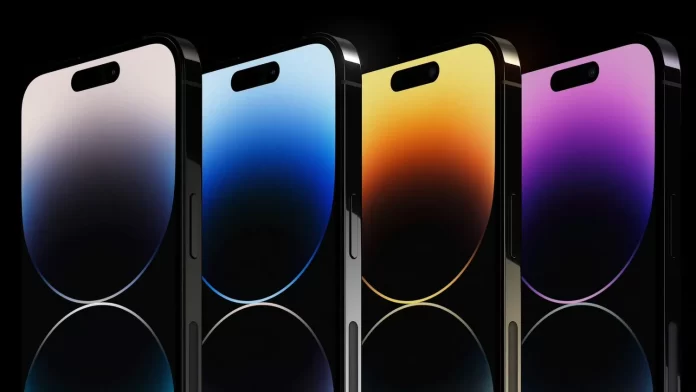The iPhone 14 series is official and already on pre-order as of this Friday. The first lucky users will have one in their hands next week.
Wanted to share some thoughts about the new models now that the dust has settled down.
Price Hike:
Apple has subtly increased the price of iPhones a few times and it did it again this year. In 2021 the cheapest (non-SE) iPhone was the mini, which started at $700, now the cheapest member of the premium lineup is the iPhone 14 at $800.
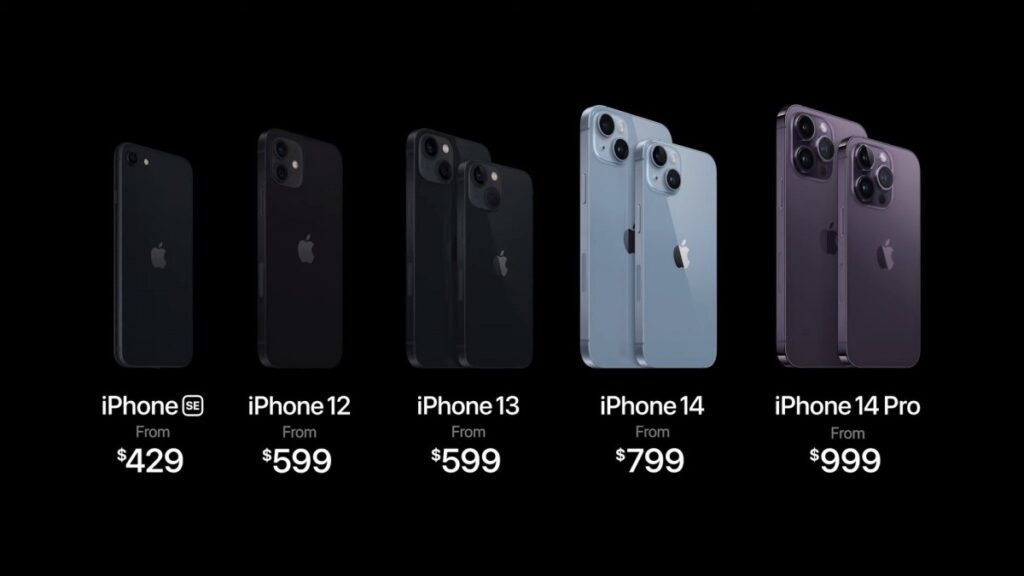
Yes, the iPhone 13 was also $800 and Apple is pointing at that, hoping that you won’t notice that the price of admission went up as the mini went away. We have detailed pricing info for the new models, if you want to have a look. The mini itself was part of a subtle price hike – the vanilla iPhone 11 started at $700 in 2019, the base iPhone 12 was also $700 in 2020. However, that was the newly-introduced mini, the 6.1” iPhone 12 (which was the actual successor to the vanilla iPhone 11) went up to $800.
There was another fib during the Wednesday event – Apple showed the US pricing of the iPhone 14 models, suggesting that it is the same as the 13 series. And it is, though there is a “but” coming. The new models cost the same as the old ones in several countries (including the US, Canada and China), but have considerably gone up in Europe, parts of Asia and other regions.
iPhone 14 | iPhone 14 Plus | iPhone 14 Pro | iPhone 14 Pro Max | |
| US | USD 799 | USD 899 | USD 999 | USD 1,099 |
| UK | GBP 849 | GBP 949 | GBP 1,099 | GBP 1,199 |
| Germany | EUR 999 | EUR 1,149 | EUR 1,299 | EUR 1,449 |
| India | INR 79,900 | INR 89,900 | INR 129,900 | INR 139,900 |
| China | CNY 5,999 | CNY 6,999 | CNY 7,999 | CNY 8,999 |
| Japan | JPY 119,800 | JPY 134,800 | JPY 149,800 | JPY 164,800 |
The Plus is a welcome addition to the family
Apple resurrected the “Plus” naming for the new iPhone 14 Plus. It is the same size as the 14 Pro Max (off by just fractions of a millimeter) and it claims the same 6.7” screen diagonal. It has effectively the same pixel density too (458ppi), making for a nice, sharp image.
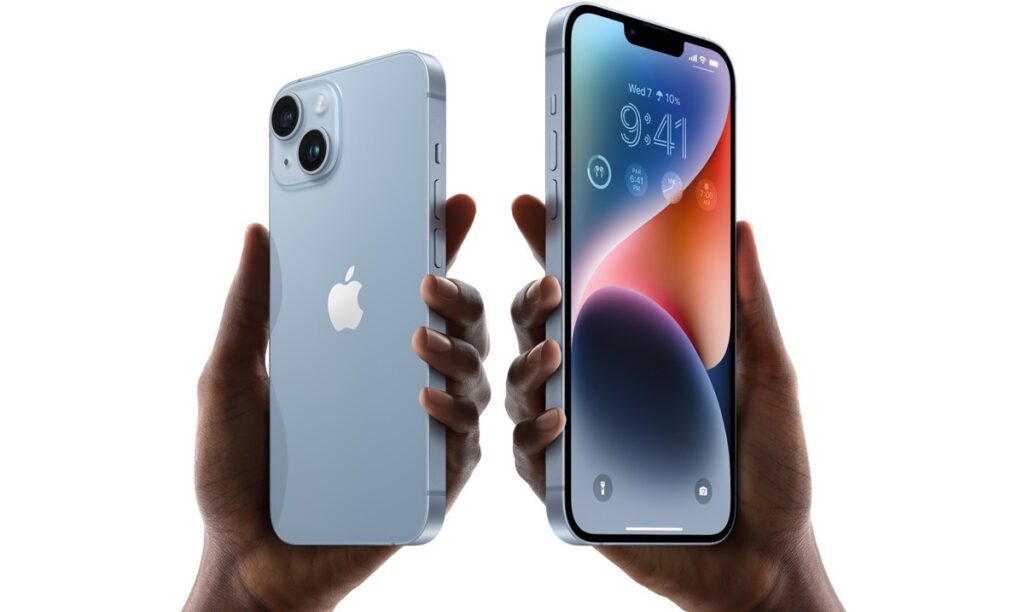
However, that is where the similarities between the Plus and Pro Max end. For starters, it is still a 60Hz panel and it doesn’t support Always On Display (new on the Pros). Also, the Pro panels are brighter, the Plus and vanilla iPhone 14 keep the typical brightness at 800 nits and peak at 1,200 nits (vs. 1,000 nits typical and 2,000 nits peak for the 14 Pro duo).
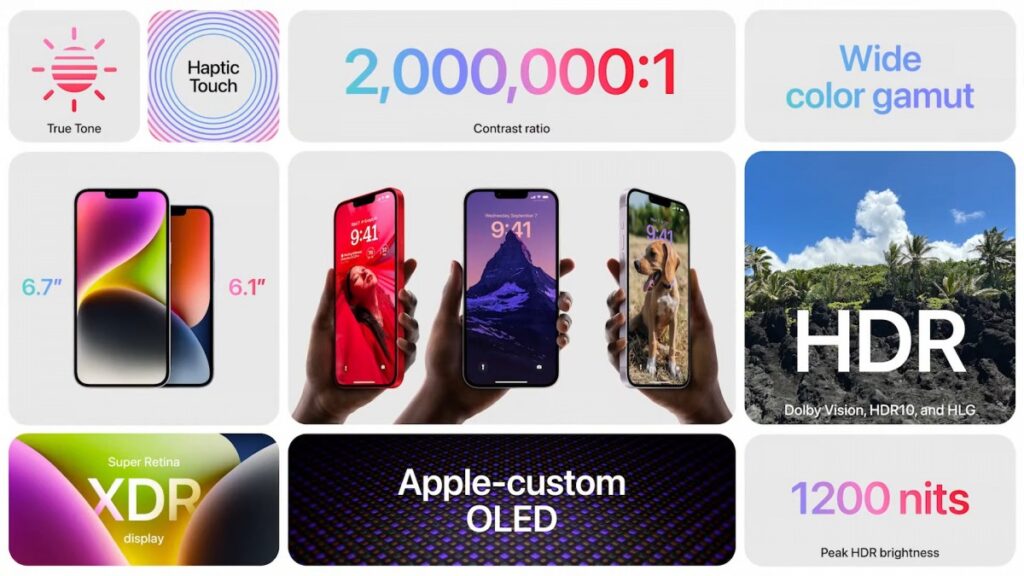
There are a couple of other major differences between the Plus and the Max – the chipset and cameras – but we’ll get to those later.
The iPhone 14 Plus is a welcome addition to the Apple family. Not everyone cares about having the best cameras, even fewer demand peak performance these days, but some do want a larger screen and battery than the 6.1” vanilla iPhone offered. Previously their only option would have been the iPhone 14 Pro Max model at $1,100, now they can pick up the Plus at $900 instead.
The iPhone lineup needed a Plus model and we think it will be quite successful. But did its birth require the death of the mini? Probably not and it doesn’t matter, anyway. Going by sales numbers reported by analysts, the mini died on its own due to a lack of interest from consumers.
A new mini wasn’t really necessary
We know a few people will protest the statement above, so let’s address it before moving on to the upgrades (and sometimes lack thereof) on the 14 series.
The mini is still around in the form of the iPhone 13 mini. Considering the incremental upgrades to the camera, chipset and display on the base 14-series, a hypothetical iPhone 14 mini wouldn’t have been all that different. If you want a small phone (properly small, not Android small) with a premium build and performance, the 13 mini is still a great pick.
An exciting camera upgrade for the Pros
Like Google, Apple hyper-optimized a camera setup and was reluctant to make major changes. It got great results for several years, but it was high time to leave behind the 12MP resolution and standard Bayer filter.
Apple did a great job of explaining the benefits. The new 48MP sensor offers a high quality image at 2x zoom, which bridges the gap between the main cam and the 3x telephoto camera. In daylight it can take detailed 48MP RAW images, in the dark it uses pixel binning to reduce noise. It could have enabled 8K video recording too, but maybe next year.
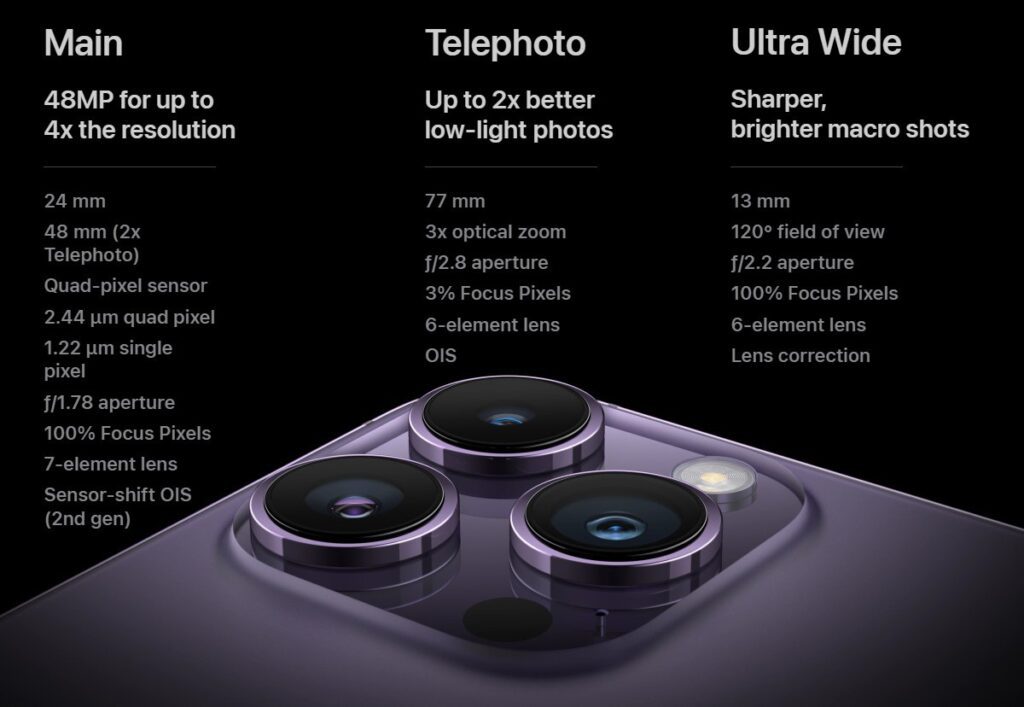
Either way, the new iPhone Pro camera is much more versatile. The other side of the stable has less to show. The iPhone 14 and 14 Plus cameras do bring in a larger sensor and a brighter aperture for the main camera, plus they benefit from the new Photonic Engine. However, they are starting to feel really outdated now as it has been nothing but iterative improvements since 2019.
One change we applaud is the addition of autofocus to the selfie camera, this can (and usually does) have a major impact on the quality of selfies. But for how long will we have to look at notches and pill-shaped punch holes before under display cameras arrive on iPhone?
AOD and Dynamic Island
The iPhone 14 Pro and 14 Pro Max displays are some of the best OLED panels on the market – 1-120Hz LTPO, sharp, remarkably bright, HDR10 and Dolby Vision support, tough glass and now with Always On mode to boot. It’s hard to find a fault with the displays themselves.
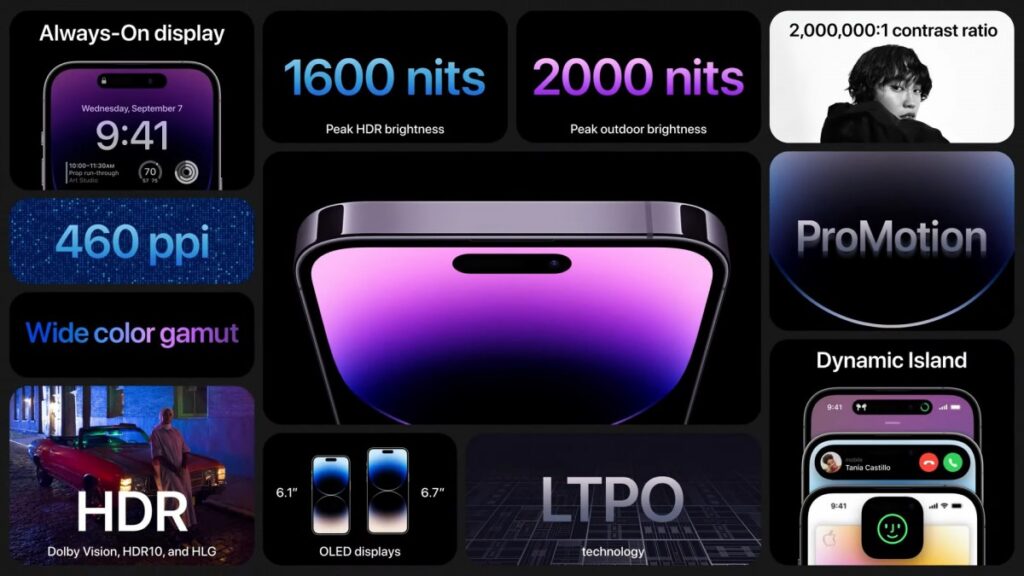
That is not the case for the iPhone 14 and iPhone 14 Plus, which bring basically no upgrades since the 13-series and they really aren’t that different from what the iPhone 12 has.
We’re going back to the Pros to look at the first major redesign of the TrueDepth camera. It’s the largest punch hole we’ve seen yet, but Apple dressed it up with the so-called Dynamic Island.
The Dynamic Island pops up icons from apps that want your attention, shows indicators (e.g. showing that the camera or microphone is active), it can even expand to show a new notification.
We have to give it to Apple, the animations are buttery smooth and the marketing is sleek, but the Dynamic Island doesn’t do anything that a typical status bar can’t. Of course, with a pill this wide, there’s no room for a proper status bar.
Apple’s relentless progress on chipsets is slowing down
Apple stood out with not just having the best mobile chipsets, but also using them on all smartphones in a given generation – even the iPhone SE (2022) has an Apple A15 chip. There was a small divide as the A15 had two tiers, one with a 4-core GPU (used in iPhone 13, 13 mini and SE) and one with a 5-core GPU (used in the Pros).
Now there is a much bigger gap between vanilla and Pro models as the iPhone 14 and 14 Plus are still using the A15 chipset. It’s the more powerful 5-core GPU version (which Apple says will deliver 18% more GPU performance), but we’re not sure that will have much of an impact when the target is 60fps.
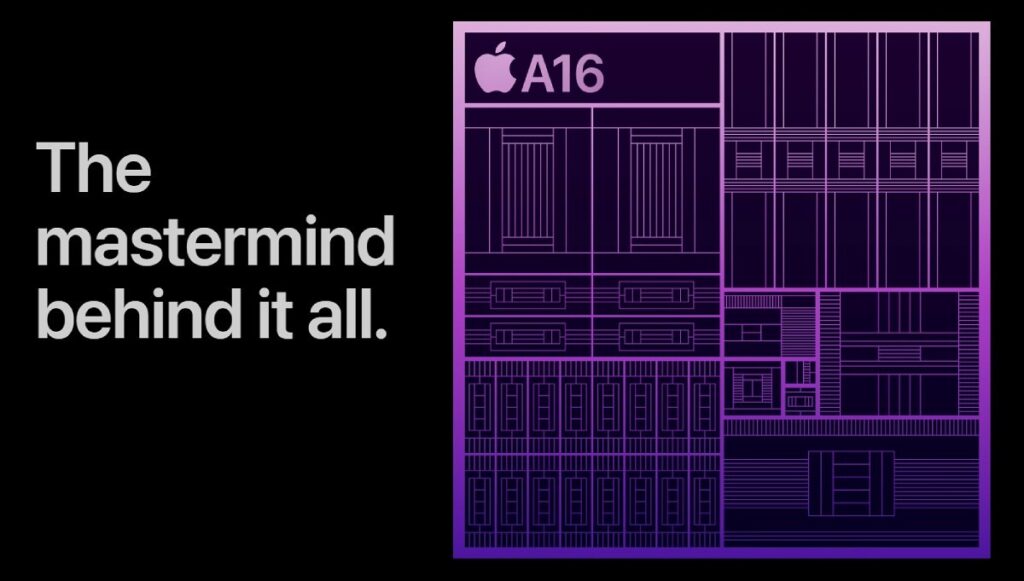
We suspect that one change that Apple didn’t talk about will be much more beneficial – all iPhone 14 models have 6GB of RAM (no change for the Pros, but the 13 and 13 mini had only 4GB). Even moderate multitaskers should get an improved experience.
As for the new Apple A16 chipset, Apple compared it to a three year old A13, but that was mostly to flex how fast it is (the company claimed that the A13 is faster than the best Android chipset of 2022, but that could only be true with a lot of fine print). Early reports show that Apple cranked up the peak CPU clock speed – at 3.43GHz theirs is the fastest smartphone core – but actual performance improvements are slim to none.
While it is true that Apple has the fastest mobile chipset, the competition isn’t far behind and the A16 is about to come face to face with the Snapdragon 8 Gen 2, which is coming in a couple of months.



